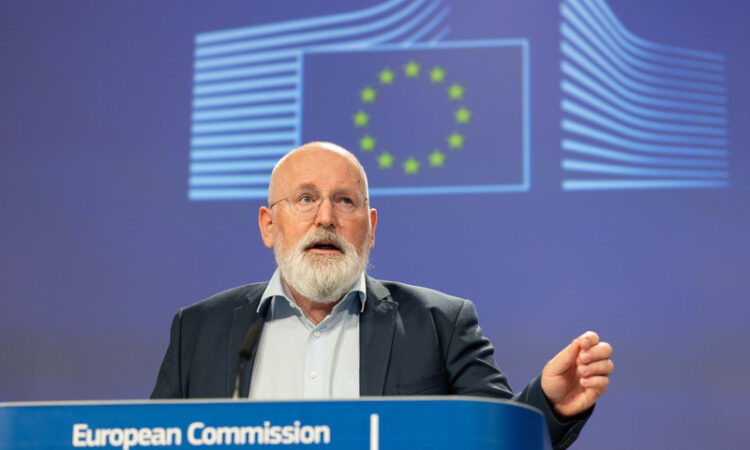
On Thursday (17 March) the EU launched the Hydrogen Bank. It is a new platform to connect users with producers and generate private sector interest in the fledgling green and low-carbon hydrogen technologies.
Green hydrogen is produced by splitting water from oxygen molecules through electrical currents powered by wind and solar. Low-carbon hydrogen is produced with fossil fuels but with added technology that, in theory (if not in practice), captures climate-harming emissions.
Both technologies do not exist on the market today, but they are supposed to become one of the central features of tomorrow’s carbon-free industry in the next seven years.
“When I first started talking about clean hydrogen in 2019, even my own staff said, ‘What?!’ Now it is one of the most dynamic areas of development in the world of energy,” said EU Green Deal commissioner Frans Timmermans on Thursday.
Today, 90m tonnes of the stuff is produced annually using gas and coal, mainly to process oil and produce methanol for plastics, and ammonia, the main ingredient of industrial fertilisers essential to feed the world’s population.
Annual industry emissions reach 900m tonnes of carbon dioxide a year, exceeding the total yearly emissions of Germany. Replacing this with green hydrogen will require 1.5 times the electricity generated by all solar and wind farms ever installed combined.
But the sector suffers from a “chicken-and-egg” problem, said Timmermans, where producers are waiting for guaranteed demand and buyers are waiting for cheap stuff to enter the market.
In the absence of demand, “the strategy behind the European Hydrogen Bank is to cover and, eventually, to lower, the cost gap between renewable hydrogen and the fossil fuels it can replace,” the document says.
The European Clean Hydrogen Alliance identified 840 hydrogen projects across all parts of the value chain, dubbed ‘project pipeline.’
The commission is currently designing an auction system under the new competitive bidding mechanism. The first round is expected to be held in the autumn of 2023 with an initial budget of €800m and is accessible for domestic producers and exporters outside of the EU.
Funds will be distributed in the form of a fixed premium-per-kilogram-produced hydrogen for a maximum of 10 years. New funds will be made available at a later stage.
To get a sense of the scale of the funds necessary to kickstart the industry: one billion euros is estimated to enable 50,000 tonnes of renewable hydrogen, a fraction of what the commission aims at. Initial commission estimates suggest €90bn-€115bn is needed to cover the cost difference for green hydrogen and subsidise 20m tonnes by 2030.
So far, €10.6bn in national project subsidies has been approved, with a further €10bn assigned under the pandemic reconstruction funds. However, only “10 percent” of all hydrogen projects have reached a final investment decision, said Timmermans.
Ultimately, the EU would need to attract a total investment worth between €335bn-€471bn to achieve its domestic production target of 10m tonnes and €500bn on foreign investments to reach 10bn tonnes in imports. And while Timmermans remains hopeful new funding mechanisms and the hydrogen bank will kickstart the industry, analysts doubt whether the 20m tonnes is feasible or necessary.
According to research by lobbyist Hydrogen Europe, total consumption of hydrogen used in refineries and for fertilisers comes in at 5.5mt.
Andreas Graf, a senior policy expert at Agora Energiewende, in a series of tweets, has described the EU’s hydrogen target as “massively inflated” and “complete nonsense” fed by “hydrogen hysteria.”
One of the risks of an inflated hydrogen target is that it could end up using solar and wind power which is more efficiently used for electric heating or charging vehicles. Rules to prevent this from happening were recently watered down.






